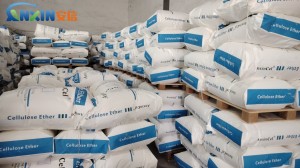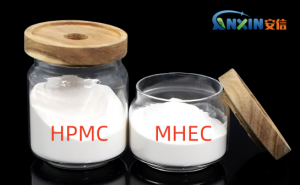In modern building materials systems, methyl hydroxyethyl cellulose (MHEC) has become an indispensable high-performance additive. As a modified cellulose ether, MHEC is widely used in mortars, putties, coatings, tile adhesives, self-leveling compounds, and cement-based waterproof coatings due to its excellent thickening, water retention, stabilizing, and workability-improving properties. As building materials systems continue to develop towards high performance, environmental friendliness, and ease of application, the role of MHEC becomes increasingly prominent.
1. Basic Characteristics of MHEC
MHEC is a non-ionic, water-soluble polymer made from natural cellulose through methylation and hydroxyethylation modification. Its molecular structure contains both hydrophobic methoxy groups and hydrophilic hydroxyethyl groups, giving it excellent solubility, rheological properties, and film-forming properties. MHEC dissolves rapidly in water to form a transparent solution, imparting suitable viscosity and thixotropy to the system.
MHEC is stable to acids and alkalis, has good salt resistance, excellent compatibility with other additives, and is not easily affected by ions in the system. This stable chemical property is the foundation for its long-term performance maintenance in complex building systems.
2. The Core Role of MHEC in Building Materials
2.1. Excellent Water Retention Performance
During the application of building mortars, putties, tile adhesives, and other materials, moisture is easily absorbed by the substrate or air, leading to premature water loss in the mortar and affecting the cement hydration reaction and bond strength. MHEC can effectively form a “water-retaining film” in the system, delaying water evaporation and ensuring sufficient internal hydration of the material, thereby improving construction time, adhesion, and final strength.
2.2. Excellent Thickening and Rheology Control
MHEC has a significant thickening ability, adjusting the consistency and fluidity of the mortar system. By controlling the addition amount and substitution degree, an ideal workability can be achieved—easy to apply and smooth, yet not prone to sagging or bleeding. Especially in vertical construction, MHEC significantly improves the material’s anti-sagging and anti-slip properties, ensuring smooth construction.
2.3. Enhanced Workability and Composition
Modern building materials not only pursue performance but also emphasize the construction experience. MHEC imparts excellent lubricity and ductility to materials, reducing construction resistance and improving worker smoothness and efficiency. For systems such as tile adhesives and self-leveling mortars, MHEC balances flow and adhesion properties, making construction easier.
2.4. Enhanced Material Stability and Anti-Segregation
In high-solids or complex multiphase systems, MHEC prevents solid-liquid separation and particle sedimentation, maintaining system homogeneity. Its colloidal stabilizing effect reduces segregation or clumping during transportation and storage, thereby extending the material’s shelf life.
2.5. Improved Bonding and Crack Resistance
MHEC’s film-forming properties create a flexible network structure in hardened materials, enhancing the system’s toughness and crack resistance. Its excellent water retention ensures complete cement hydration, forming a denser structural layer, improving bond strength and durability.
3. MHEC Drives the Development of High-Performance Building Materials
3.1. Facilitating the Realization of Low Water-Cement Ratio, High-Strength Mortars
Traditional mortars often require a high water-cement ratio to ensure workability. MHEC, by improving rheological properties, can achieve good workability under low water-cement ratio conditions, thereby improving mortar density and durability.
3.2. Adapting to the Development of Environmentally Friendly Dry-Mix Mortars
Modern dry-mix mortars require stable transportation and long-term storage. MHEC’s anti-caking and anti-segregation capabilities perfectly meet these requirements, enabling dry-mix products to quickly regain workability after long-term storage.
3.3. Supporting Energy Conservation and Green Building Concepts
MHEC is derived from natural cellulose, is safe and non-toxic, biodegradable, and meets the sustainable development requirements of environmentally friendly building materials. At the same time, it helps reduce waste and construction energy consumption, making it an important part of the green building materials system.
3.4. Expanded Applications in New Material Systems
In addition to traditional cement mortars, MHEC is also widely used in new systems such as gypsum-based, lime-based, and polymer-modified mortars. It works synergistically with other organic or inorganic additives (such as RDP and HPMC) to achieve further functional optimization, such as improved elasticity and freeze-thaw resistance.
MHEC is not only a physical thickener and water-retaining agent, but also a key regulator for optimizing the performance of modern building materials. It plays a comprehensive role in workability, adhesion, durability, and environmental friendliness. It can be said that the addition of MHEC has truly ushered in a new era of high efficiency, stability, and environmental friendliness for traditional mortar and coating systems.
Post time: Oct-29-2025

